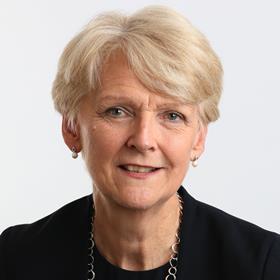The real estate industry seems to display a lemming-like tendency to follow a fad. Once it was shopping centres, then student accommodation, followed by big sheds and logistics. And now it is life sciences.

I spent a good part of my working life back in the 1990s looking at how to commercialise the extraordinary scientific and engineering endeavour of the then Defence Evaluation and Research Agency (later QinetiQ). And more recently I have become involved through the University of Cambridge non-operational property board. So I know just a little bit about the challenges of turning scientific innovation into something that is commercially viable.
So here are just a few of the questions that we may want to address as the industry rushes headlong into its latest love affair with life sciences.
First, a definitional question. Why is it life sciences when what is important is leveraging off all aspects of scientific innovation to improve our health, wealth and happiness? For obvious reasons, we are obsessed with viruses, vaccines and human health but society will benefit from innovation in a whole range of other disciplines, which will in turn help us deal with the challenges of climate change, population growth, scarcity of natural resources – in fact pretty much any existential problem.
Second, will just badging a building a life sciences hub or science-based innovation hub automatically turn it into one? At the bottom of all successful scientific clusters is a source of incredible intellectual endeavour – hence the concentration of science-based campuses around Oxford, Cambridge, Imperial and other world-renowned academic institutions. It doesn’t have to be a university; QinetiQ used its years of world-leading defence research to found science parks and innovation hubs. But the basis is the same and the key ingredient must be some form of intellectual know-how that will lead to an innovative solution to a real problem or challenge.
Third, is the masterplanning that the real estate industry employed in its town centre regeneration schemes in the nineties and noughties adequate for catalysing the creation of successful innovation clusters, hubs, campuses or districts? Scientists and engineers need high-class laboratory and workshop facilities. But they also need all the breakout and social spaces that allow for the sharing of ideas and the serendipitous coming together of unlikely partners who may just occasionally hit upon a world-beating idea. This is a rather different set of drivers to those needed to create a successful retail district. So who is the industry consulting with in order to work out what is needed to create a successful scientific cluster?
The key principle here is collaboration, something the real estate industry considers itself to be quite good at, having worked for years to foster better public/private sector co-operation. But are we talking about the same thing or is there an extra element to this academic/scientific/commercial collaboration that our industry may not yet fully understand? In which case, we should be listening carefully to those who have already done it successfully.
The US seems to have got this right in places like Kendall Square in Cambridge, Massachusetts – held up as the epitome of a truly collaborative innovation district – but it has taken a huge amount of time and resource to get there. We also need to be willing to invest in the sorts of collaborative facilities that do not necessarily provide an immediate return, but which will yield fruit in the longer term. Patient capital is something that we all talk about – expecting investors or institutions to provide it as we teeter on the brink of a significant real estate downturn will require some creative approaches to investment decision-taking.
But I don’t want to finish on a pessimistic note. The real estate industry has a huge role to play in supporting science and innovation and helping it to come up with the discoveries and solutions that our society and economy need. This could also be the best opportunity yet to show government and a wider, sceptical world the importance of our industry in providing the accommodation and places that enable our economy and society to flourish.
Our ancestors didn’t necessarily make a good fist of providing the best space for the first industrial revolution or in the rush to rebuild after the Second World War. But if we adopt the right mindset and take the right sort of advice, we can show the world that we are an industry that listens, that adapts to changing needs and that is prepared to work collaboratively with this new breed of scientific and technological occupiers to support them in producing the innovations on which the future of our society depends.
Liz Peace is chair of Real Estate Balance





























No comments yet